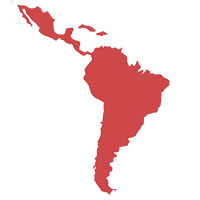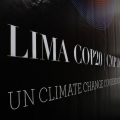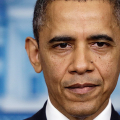Lima has seen intense negotiations over the semantics of how finance should be included in the international climate change process, with a higher level of scrutiny placed on the Green Climate Fund (GCF).
Over 250 organisations, from both developed and developing countries, have recently submitted a letter to the board of the GCF demanding that the board adopts stricter regulations to ensure that countries are transparent about, and accountable for, the use of their funds. These rules and regulations would provide guidance and boundaries so that the funds do not end up financing activities that enhance climate change instead of mitigating it.
The fund was created as a financial tool to provide economic means to the international community in its efforts to combat climate change. At it’s simplest incarnation: this would primarily be done by financing the implementation of mitigation and adaptation projects in developing countries.
The lack of clear guidelines and transparency have left a gray area in the fund’s regulating mechanisms though. These gray zones have allowed Japan to set US$ 1 billion in loans for new coal plants in Indonesia. While Japan’s actions go against the main objective of the fund, they have technically done nothing wrong because there was no regulation that explicitly prohibited it in the first place. They claim that their allocation of funds to the construction of the coal plants does indeed align with the fund’s objective. These new plants proposed would be ‘greener’ than other conventional ones, conveniently overlooking the fact that coal is one of the biggest sources of emissions.
Creating an ‘exclusion list’ that profiles the types of projects that do not contribute towards the fight against climate change would help achieve stricter regulation. This wouldn’t be a first, as the World Bank, for one, has existing exclusion lists for things such as weapons trade and production of radioactive materials.
Defining what ‘appropriate’ climate finance is has proven to be a challenge for countries present in Lima. Strict guidelines may result in a diminished number of mitigation and adaptation activities, yet the flip side of the coin is using loosely framed definitions may allow for the inclusion of ‘business as usual’ activities as long as they can be framed as ‘green’.
The UN’s Standing Committee on Finance are under pressure to better guide the fund, however they are restricted by not being able to directly modify or impose any regulations. This leaves the board, compromised of 12 members, as the main decision makers on exclusion lists. Due, in part, to the uproar caused by Japan’s less than green plan, the board has commissioned some research to discuss the guidelines at their next meeting in February 2015 with a higher degree of specificity.
Expectations that an initial set of guidelines will be produced in Lima have only increased when the Green Climate Fund invited public input into the fund’s investment framework. This letter from civil society has questioned the very core raison d’être of the fund with questions around the lack of a firm position as to how the fund will assist a “paradigm shift” without prioritising renewable energy projects over fossil fuel ones.
The call for public input and ongoing conversations during COP20 around the lack of guidelines are, if nothing else, indicators that something may just well happen in February next year.













comment